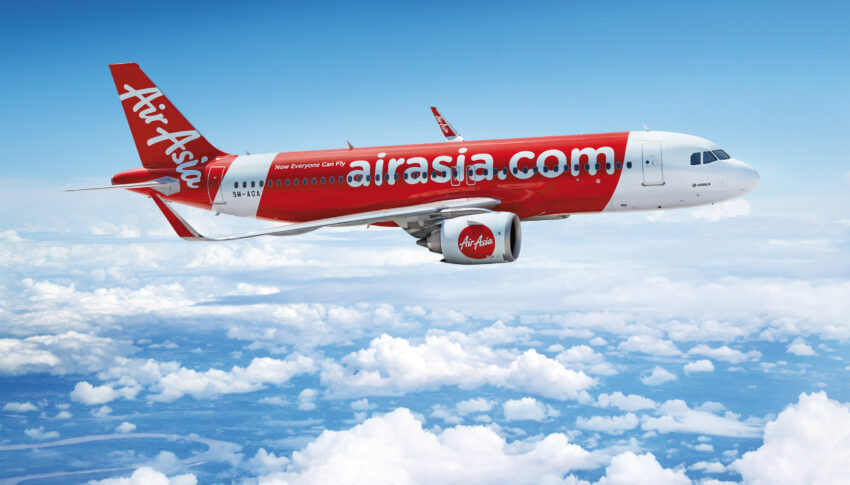A global crisis such as COVID-19 can lead companies to shrink in size and outsource key functions, in hopes of minimising exposure, liabilities and losses as much as possible. AirAsia Group is instead carving out AirAsia Malaysia’s engineering arm into an independent entity by the name of Asia Digital Engineering (ADE). We sat down with chief executive Mahesh Kumar to learn more.
[Intro links: Asia Digital Engineering / Chief executive Mahesh Kumar]
While the one-year-old company is seen as a new player in the MRO industry, Kumar tells us, it has the experience of supporting an airline as the engineering arm of its 20-year old low-cost carrier parent.
Transitioning AirAsia’s engineering arm into ADE has resulted in the centralisation of the engineering team, materiel and people into a single company, allowing ADE to optimise resources and assets, accelerate cost reductions, and raise service quality through digitalisation.
Prior to ADE’s establishment, Kumar says AirAsia was previously more focused on line maintenance than on base maintenance, outsourcing that maintenance work to external parties. Following the COVID-19 outbreak, AirAsia studied the possibility of further reducing costs by bringing maintenance in-house and having its own component workshop.
He adds while AirAsia Group’s fleet size provided a large volume of work to outsourced MRO partners, these companies would have generated a profit margin from the contracts — which can now be retained within the group.
There are also cultural and organisational benefits. As an AirAsia Group subsidiary, Kumar says ADE has the AirAsia DNA which he describes as “low cost”, “quick turnaround time,” and “best quality”. The former AirAsia engineering team that are now working at ADE were also able to “aggressively” reduce their maintenance cost, while ADE has been able to implement digital initiatives into its business in areas such as predictive maintenance, while simultaneously optimising processes and cutting aircraft turnaround times during maintenance.
“What is ADE all about? It is about making engineering and MRO services as low cost and quick without compromising quality, not just for AirAsia carriers but for any airline customers,” says Kumar.
While some MRO operators only provide specific services, ADE can cover the entire aircraft, and lean on sister companies Ground Team Red for ground handling and Teleport for logistical support.
Within AirAsia Group’s future plans to turn itself into a travel and digital platform for Southeast Asia, Kumar says his company is placed under the AirAsia Digital portfolio, whose key businesses include e-commerce, logistics, and fintech. ADE works with AirAsia’s digital teams to develop in-house software and predictive maintenance products, providing the technical details such as aircraft technology and related knowledge.
ADE can also rely on the airline experience of AirAsia Digital’s president, Aireen Omar, who was the chief executive of AirAsia Malaysia between July 2012 and December 2017.
While ADE now has a hangar at Kuala Lumpur International Airport capable of handling one aircraft, a second facility at Subang Airport will commence operations by November 2021, where it has leased two hangar lines from an existing operator, says Kumar.
The Subang facility will be a temporary one as ADE’s long-term plan is to consolidate its operations at Kuala Lumpur, with a hangar capable of handling up to 14 aircraft simultaneously. Besides the Airbus A320s and A330s, ADE is keen to expand its capabilities beyond the two types to handle A350s and Boeing 737s and 787s.
When it comes to third party work, Kumar says three Asian carriers are now working with ADE on maintenance works.
Despite planning to have a larger facility, Kumar feels its third-party business could somewhat be “restricted” as AirAsia’s own aircraft maintenance needs would take up most of the space when this facility is operational, as up to 12 aircraft would undergo maintenance at any one time.
In the interim, AirAsia will continue to outsource aircraft maintenance to external MRO partners.
“Until our 14 [hangar] lines are ready, there is no way we can stop outsourcing,” says Kumar. He also pointed out that the three hangar lines it will operate isn’t sufficient to handle the group’s fleet, which is expected to reach 235 aircraft by year-end.
Although growing internationally is on the cards, Kumar stresses this would be contingent on the growth of AirAsia carriers in Indonesia, Philippines and Thailand. This despite news reports from 2018 saying AirAsia Group plans to have a maintenance hangar at Thailand’s U-Tapao airport, some 200km southeast of Bangkok.
Nevertheless, Kumar sees strong growth for MRO players and is of the opinion that the industry isn’t severely affected by COVID-19. While it is possible for carriers to delay aircraft maintenance checks or to ground them temporarily, aircraft maintenance isn’t based only on flying hours and cycles but also calendar years.
As the aviation industry slowly recovers, evidenced by AirAsia’s resumption of services in Malaysia, Indonesia, Philippines and Thailand, Kumar is of the opinion that key challenges his peers could face include supporting a potentially higher volume of maintenance works when COVID-19 becomes endemic, and having the necessary facilities, company resources, and its employees ready to deal with the workload.
Looking ahead, AirAsia Group intends to grow ADE into the Malaysian MRO market in three years and the rest of Southeast Asia in five years. “Like how AirAsia disrupted the airline industry, we can confidently say that ADE is going to disturb the MRO industry,” says Kumar.
Author: Firdaus Hashim/Singapore
Published: 21st December 2021



